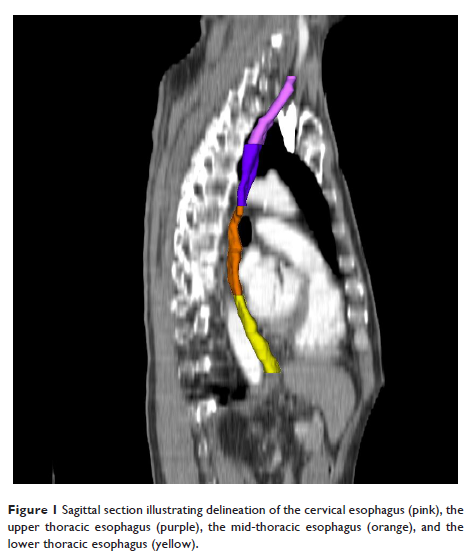9 0 5 7 8
论文已发表
注册即可获取德孚的最新动态
IF 收录期刊
- 2.6 Breast Cancer (Dove Med Press)
- 3.9 Clin Epidemiol
- 3.3 Cancer Manag Res
- 3.9 Infect Drug Resist
- 3.6 Clin Interv Aging
- 4.8 Drug Des Dev Ther
- 2.8 Int J Chronic Obstr
- 8.0 Int J Nanomed
- 2.3 Int J Women's Health
- 3.2 Neuropsych Dis Treat
- 4.0 OncoTargets Ther
- 2.2 Patient Prefer Adher
- 2.8 Ther Clin Risk Manag
- 2.7 J Pain Res
- 3.3 Diabet Metab Synd Ob
- 4.3 Psychol Res Behav Ma
- 3.4 Nat Sci Sleep
- 1.9 Pharmgenomics Pers Med
- 3.5 Risk Manag Healthc Policy
- 4.5 J Inflamm Res
- 2.3 Int J Gen Med
- 4.1 J Hepatocell Carcinoma
- 3.2 J Asthma Allergy
- 2.3 Clin Cosmet Investig Dermatol
- 3.3 J Multidiscip Healthc

在局部晚期非小细胞肺癌强度调制(化疗)放疗中产生辐射诱导的急性食管炎的临床、剂量和位置因素
Authors Huang J, He TY, Yang RH, Ji TL, Li G
Received 18 May 2018
Accepted for publication 14 August 2018
Published 21 September 2018 Volume 2018:11 Pages 6167—6175
DOI https://doi.org/10.2147/OTT.S174561
Checked for plagiarism Yes
Review by Single-blind
Peer reviewers approved by Dr Colin Mak
Peer reviewer comments 2
Editor who approved publication: Dr William Cho
Purpose: The purpose of this study was to estimate the relation between
acute esophagitis (AE) and clinical, dosimetric, and position factors in
patients with locally advanced non-small-cell lung cancer (NSCLC) receiving
intensity-modulated (chemo)radiotherapy.
Materials and
methods: A retrospective cohort analysis was
performed to identify factors associated with Common Toxicity Criteria for
Adverse Events grade 2 or worse AE (AE2+). A multivariable model was
established including patient- and treatment-related variables and esophageal
dose–volume histogram parameters. The esophagus was divided according to
physiological anatomy, and logistic regression was used to analyze the position
parameter for its correlation with AE2+.
Results: The incidence of AE2+ was 27.5%. All models included gender,
concurrent chemoradiotherapy (CCRT), position parameter, and one of the
dosimetric variables. The model with mean dose showed the best goodness of fit.
Gender (OR=2.47, P =0.014), CCRT
(OR=3.67, P =0.015), mean dose
(OR=1.33, P <0.001), and maximum radiation
position (OR=1.65, P =0.016) were
significantly related to AE2+.
Conclusion: Gender, concurrent chemotherapy, maximum radiation position, and
mean dose were independent risk factors for AE2+. The upper part of the
esophagus showed a higher sensitivity to radiation toxicity.
Keywords: acute esophagitis, non-small-cell lung cancer, intensity-modulated
radiation therapy, position parameter
